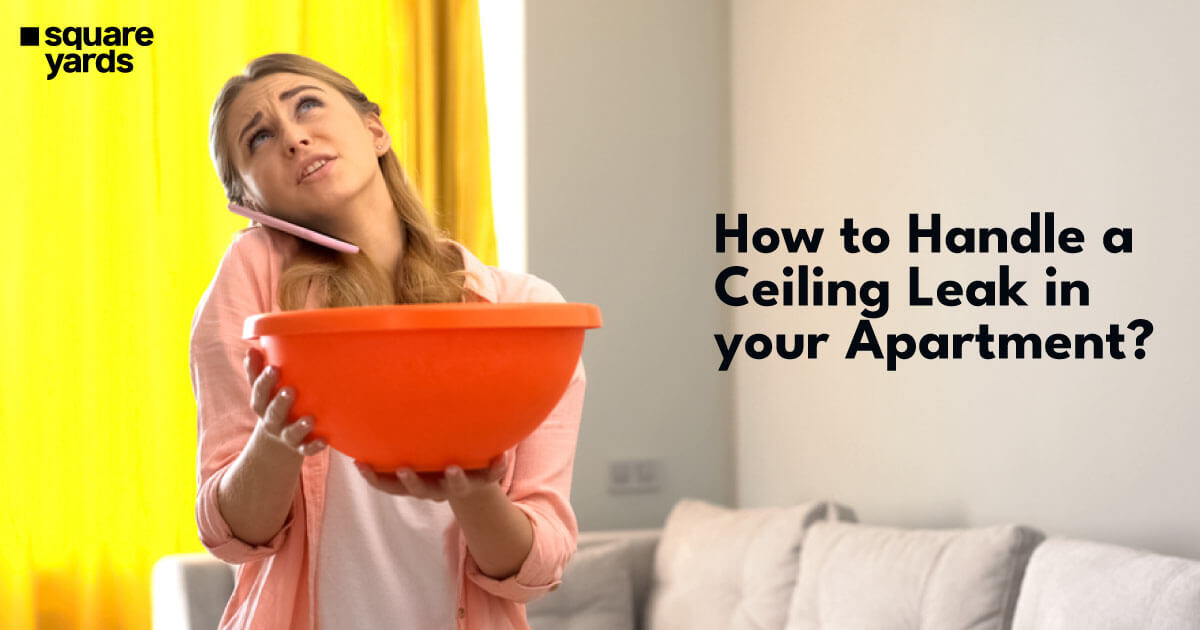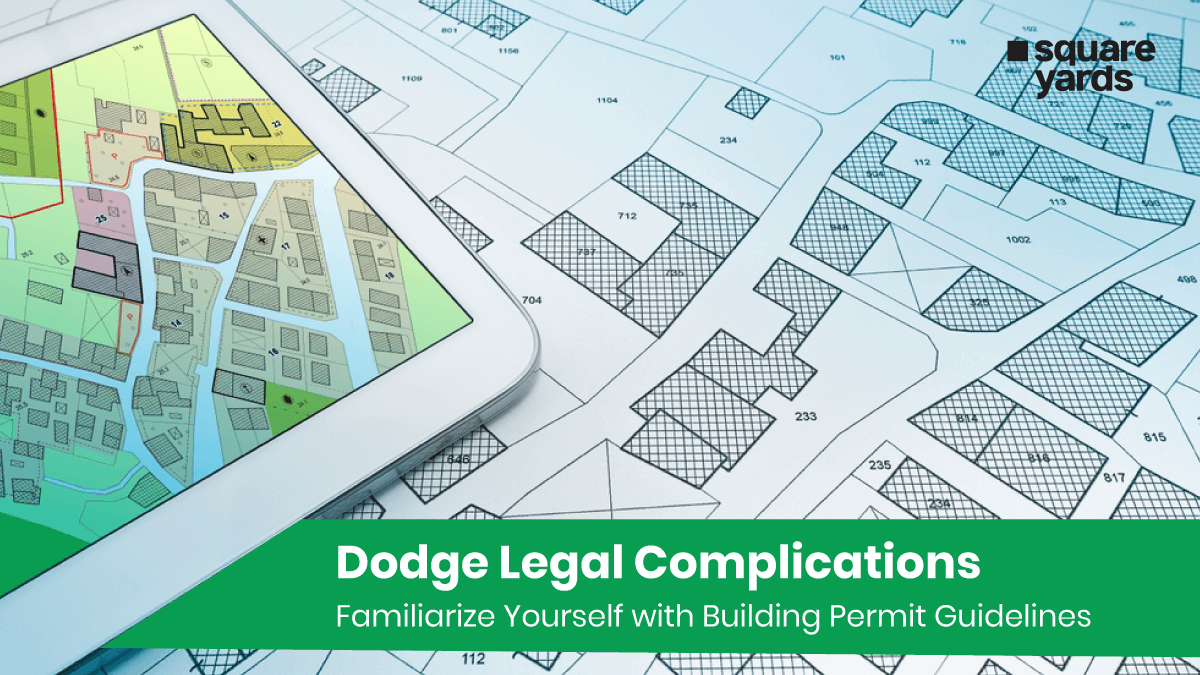Does your ceiling drip? It could be that you’re going about your day when you hear the distinctive sound of water drops hitting your floor. When you look up, you see that water is steadily gathering in your kitchen vent or light fixture before pattering down to your floor. In this blog you will get to know how it can be avoided, who should be held responsible for it and what are the different ways to fix the ceiling leaks saem.
How to Handle Apartment Ceiling Leaks?
It’s difficult to deal with ceiling leaks in your flat. Identifying the problem’s origin can be particularly challenging. This isn’t something you should try to address on your own, whether it’s coming from your upstairs neighbour’s apartment, a leaky pipe inside the building, or possibly leftover water damage from a stormy night. Renters must understand the circumstances that could result in ceiling leaks and, more importantly, who is liable for fixing them.
What are The Causes of Ceiling Leaks in an Apartment?
Apartment ceiling leaks can occur for a variety of causes and reasons. Dishwashers, blocked toilets, overflowing tubs in your flat or from your neighbour upstairs, damaged pipes, malfunctioning appliances, and so forth are just a few sources of water damage. If any of these situations are not correctly handled, they could lead to leaks, damage your possessions, and even accelerate the formation of mould. Here are some additional potential causes of your apartment’s water problems.
-
Most Common Reasons for Ceiling Leaks:
An unsafe scenario that requires prompt treatment is a ceiling leak. Here are several typical home appliances you should check out right away if you notice a leak, whether you are dealing with them personally or with your upstairs neighbour.
-
- Refrigerator water lines with leaks
- A broken disposal or dishwasher
- Overflowing bathtubs or sinks
- Backed-up and clogged toilets
- Washers with leaks
Plumbing problems that affect the entire structure can occasionally cause damage. These problems are frequently caused by gaskets, caulking, leaky pipes, or older materials that were unable to keep the water contained. Typical examples of these situations include:
-
- Pipes exploding because of the cold
- Air conditioning systems with leaks
- Fire sprinkler pipes with breaks
- Water heating systems with leaks
- Common plumbing issues
Natural weather conditions are to blame for some of the most frequent instances of leaky ceilings. It’s crucial to take immediate action to stop leaks if they occur during a storm or a severe downpour. Water from a leaking roof or attic can travel through your ceiling and out through beams and rafters. It may be prudent to purchase a flood insurance policy separately from your standard renters’ insurance before you relocate in these circumstances, especially if you happen to reside in a storm-prone location or are renting an apartment in a basement. Your possessions will be safeguarded in the event of a natural calamity.
-
Signs of Leaking Ceiling
-
Discolouration
-
Even if your ceiling appears dry to the touch, the first signs of a leak may include dark stains in the form of rings and dots.
-
-
Fading Paint
-
Paint will flake or peel if moisture is present in a certain area of the ceiling heavily and for an extended period of time.
-
-
Sagging
-
If water is not treated, it will gradually collect over time. The ceiling will sag due to the weight of the water. If the required repairs are not completed right away, significant property damage may result.
Who is To be held Responsible For a Leaking Ceiling?
Knowing your rights as a tenant is crucial since water damage can occur at any time. Examine your lease agreement; you should find a part that discusses the subject of water damage, flooding, or leaks. This will help you determine who is liable for the repairs in accordance with the conditions of your lease.
-
Responsibility of the Tenant
You are responsible for anything that belongs to you as the tenant. The landlord is not responsible for making repairs to the washing machine and may not be liable for property damage either if you are responsible for the purchase and ownership of a washing machine and it leaks, resulting in water damage to the property. Therefore, the cost of any repairs would fall on you or your renter’s insurance provider. This also covers water damage and ceiling leaks brought on by a tenant’s carelessness or failure to inform the property manager. Additionally, if a ceiling leak is discovered, tenants are required to remove their personal property from the damaged area. You are accountable for your personal property. In most cases, landlords are not liable for replacing or fixing damage to a tenant’s personal belongings.
-
The Responsibility of the Property’s Manager or the Landlord
Property management is most likely in charge of resolving any issues with ceiling leaks that are not the result of carelessness. For instance, the property manager or landlord should repair structural damage so that your area is habitable, such as if a damaged pipe is seeping through your ceiling and harming your hardwood floors. The tenant may be able to withhold rent until the property is habitable if the landlord neglects to maintain it.
If your landlord does not correct the issue, you can go further and notify the county health department or city clerk to find out who is responsible for inspecting and enforcing housing regulations. Additionally, you could consult a local tenants’ rights group or landlord-tenant lawyer.
-
The Neighbor
Perhaps your upstairs neighbour fails to shut off the water in their bath, which results in a significant leak in your ceiling. Your carpet and furniture have been harmed due to the upstairs tenant’s negligence. Your personal items will probably be covered by your renters’ insurance, but your landlord and the upstairs neighbour will have to come to an agreement over the cost of repairing any damage to the rental unit.
-
Insurance (Renter)
The expense of replacing your destroyed possessions is frequently covered by renters insurance coverage. The damage to the building’s structure won’t be covered by your renters’ insurance; instead, your property manager or landlord will probably have their own insurance that will take care of those damages. Examine the details of your renters’ insurance policy to determine what is and is not covered. For instance, find out how much of your renters’ insurance would cover the cost of replacing your bedroom furniture if a ceiling leak destroys it.
How to Fix a Leaking Ceiling in an Apartment Within 5 Steps?
You know you have a ceiling leaks and you need to take immediate action to remedy the issue if you notice drywall bulging, brown rings forming, or paint bubbling in your ceiling. Given below are some of the ways in which one can fix a ceiling leaks:
-
- One should always look out for the exact location of the leak. Leaks in the dining room and living room typically occur elsewhere than in the kitchen and bathroom. Keep track of whether your leak is contained in a small location or whether it affects a broader portion of the ceiling. Consider snapping pictures of your leak and, to the best of your ability, estimating its severity. The leak should be addressed right away since a discoloured ceiling and a warped ceiling indicates that it has been there for some time.
- Identifying the reason behind the leaking ceiling’s repairs and damages. One should examine the lease carefully to see who is in charge of which repairs. The damage needs to be fixed whether it was your fault, the fault of your upstairs neighbours, or the fault of the property itself. It may just be structural problems if you reside on the top floor of your apartment complex. You can be dealing with a leak as a result of a neighbour’s accident if you reside on a middle floor with tenants above you. Do check with your neighbours above in case they are unaware of a water leak in one of their apartments.
- Got a dripping ceiling? Get something to put under the dripping water. If you can, move your possessions out of the way of the water. Consider even using a waterproof cover to protect your furniture and belongings. Tablecloths and shower curtains made of vinyl are very water-resistant. If any of your possessions are damaged, you must immediately inform your renters’ insurance provider.
- Water on the floor should be absorbed. The flooring may distort or get infested with mildew if water is not quickly removed from it. To soak up pooling water, use towels or a wet and dry vacuum.
- Inform your landlord or the management company of your property of the damage. The property’s owner is responsible for making sure that the necessary plumbing is fixed and operating correctly. Do keep in mind that your landlord is accountable for engaging a repair company to handle damage brought on by underlying problems with the property.
In any case, it’s better to be cautious than sorry. If you find out that your home has water damage, be ready for the worst. Read your lease agreement to understand your rights as a tenant, and always contact your landlord as soon as possible.
You May Also Read :
|
Guide To Brighten Up a Dark Apartment |
|
|
Know The Legal Basement Apartment Permit |
|
|
Buying Condo Apartment in Toronto |
|
|
All About Apartment Decor Ideas |
Frequently Asked Questions (FAQs)
You can use a fan directed toward the ceiling to find little leaks. You might then be able to use spackle to fill in the hole and repaint if the damage is modest. If the leak is more extensive, you might need to remove the damaged area and use a fan to dry out the space above your ceiling.
In general, it's dangerous to sleep in a room with a leaky ceiling. The water may weaken the ceiling, and in extreme circumstances, it may collapse. Furthermore, the water may provide a moist atmosphere that promotes the formation of mold, which may result in respiratory troubles and other health difficulties.
Anywhere there is water damage, mold can grow, particularly in more permeable materials like drywall and insulation and in structural components like ceiling beams and flooring. You should thoroughly investigate the area if you suspect mold growth.
After being exposed to water for 24 to 48 hours, mold and mildew will appear.
Every mold has the ability to irritate skin and trigger allergic reactions. But certain molds can potentially result in far more serious health issues. Not all molds create poisons known as mycotoxins, although some do. Health issues brought on by toxic molds can range from cancer to poisoning. Can a leak in the ceiling be repaired?
Is it safe to sleep in a room with a leaking ceiling?
Does a leak in the ceiling mean mould?
How quickly does mould grow after a leak?
How toxic is mould from a leak?



































